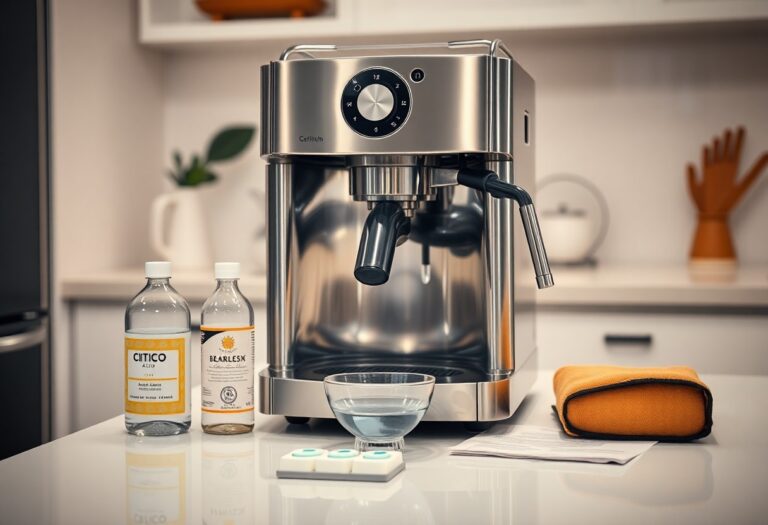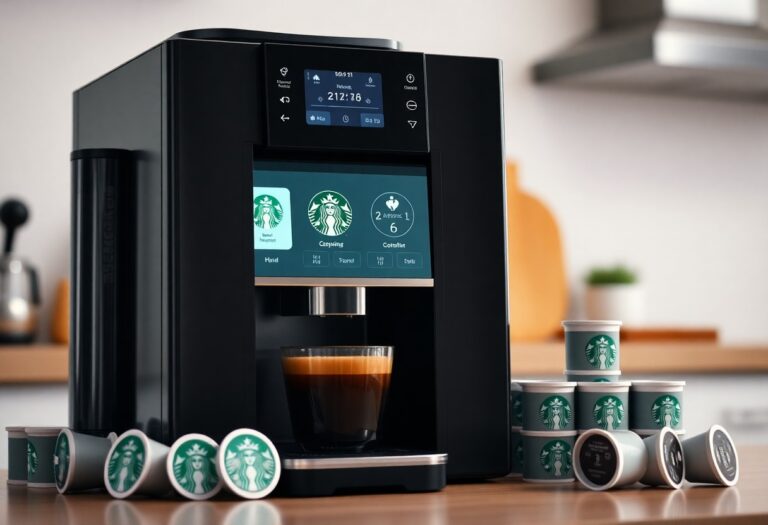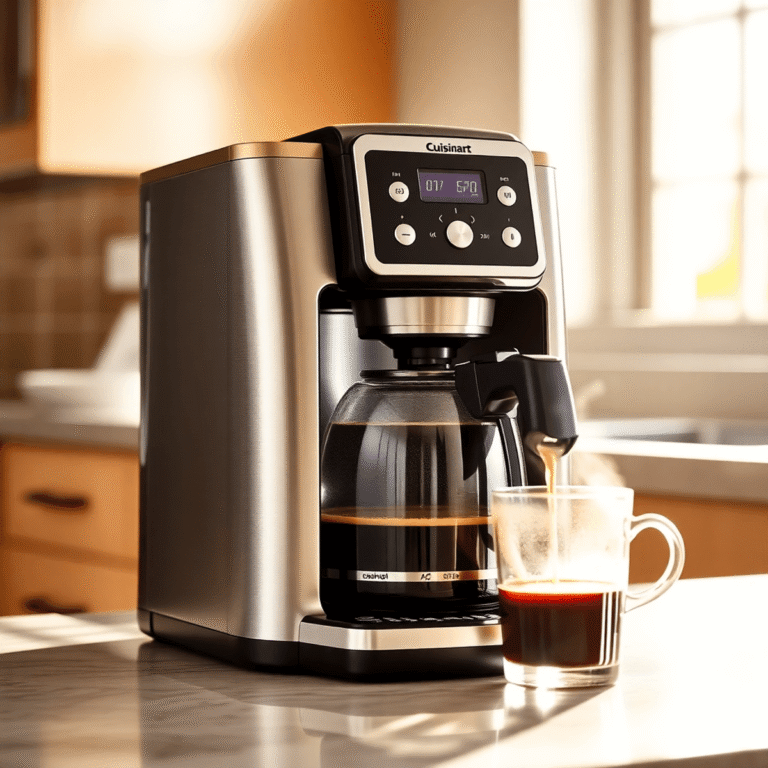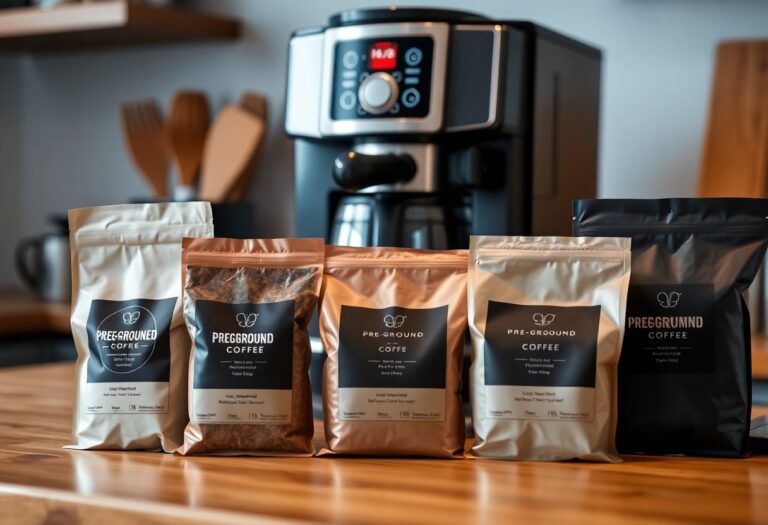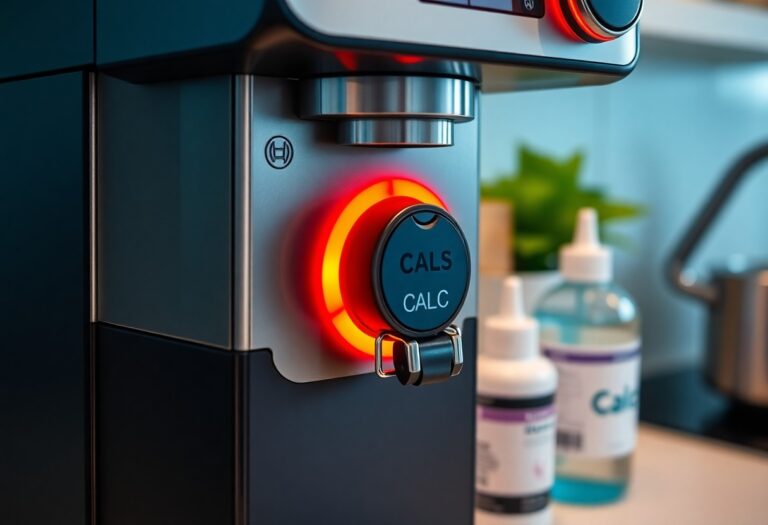Which Coffee Machine Makes the Best Crema – Espresso Excellence
There’s something undeniably special about a rich and velvety crema that crowns a well-pulled espresso shot. If you’re on a quest for the perfect crema, understanding which coffee machine suits your needs is imperative. With numerous options available, you can rely on expert reviews to guide your decision. In this post, we’ll explore the top choices that consistently deliver exceptional crema, ensuring your home-brewed espresso rivals that of your favorite café. For comprehensive insights, check out The 12 Best Espresso Machines of 2025, Tested & Reviewed.
Key Takeaways:
- Quality of the coffee machine plays a significant role in achieving the perfect crema, with specific models designed for optimal espresso extraction.
- Factors such as water temperature, pressure, and grind size affect the viscosity and flavor of the crema produced.
- Machines with built-in grinders or advanced brewing technology often deliver superior results for crema compared to standard models.
- Regular maintenance and cleaning of the coffee machine contribute to consistency in crema quality over time.
- Personal preferences and bean types also influence the optimal settings for achieving the best crema experience in espresso.

The Anatomy of Perfect Crema
Perfect crema is the golden crown of your espresso, enhancing both aroma and flavor. Its formation relies on several key factors, including pressure, coffee grind size, and freshness of the beans. When everything aligns correctly, the result is a velvety layer of crema, rich in texture and depth, elevating your espresso experience to new heights. Understanding these components not only helps you appreciate your coffee better but also empowers you to craft the ideal cup at home.
The Role of Pressure in Extraction
Pressure plays an important role in espresso extraction, ranging from 8 to 10 bars for optimal results. This force pushes hot water through the compact coffee grounds, facilitating the extraction of flavors and oils that contribute to crema formation. Insufficient pressure leads to weak, watery coffee, while excessive pressure can create an over-extracted brew, resulting in bitter flavors. Achieving the right balance is vital for that perfect shot.
The Importance of Freshness and Quality of Beans
Freshly roasted coffee beans are fundamental for achieving exceptional crema. Beans begin to oxidize and lose their flavors within days of roasting, making freshness a non-negotiable factor. High-quality beans, sourced from reputable suppliers, also yield superior crema due to their natural oils and complex flavor profiles. The blend and origin of beans can significantly affect how well they express their crema, leading to a noticeable difference in taste and texture.
Opting for beans roasted within the last two weeks and stored properly in an airtight container will maximize your potential for a rich crema. Beans from specific regions renowned for their distinct profiles—like Ethiopian or Colombian beans—tend to produce more vibrant flavors and delightful aromatics. By prioritizing the quality and freshness of your beans, you’re effectively enhancing not only the crema but also the overall espresso experience, making each cup an indulgent pleasure.
Key Features of Espresso Machines That Excel
To determine which espresso machine makes the best crema, focus on the imperative features that enhance your brewing experience. Look for machines equipped with precise temperature control, consistent pressure, and quality materials. The ideal espresso machine should not only perform well in terms of functionality but also be user-friendly and durable.
- Temperature Stability: Ensures consistent brewing temperature for optimal extraction.
- Pressure Control: Regulates pressure for the perfect crema formation.
- Build Quality: Durable materials contribute to longevity and performance.
- Ease of Use: Intuitive controls make the brewing process simpler.
- Maintenance Features: Easy to clean and maintains efficiency for better coffee.
The right combination of these features directly impacts your espresso’s quality, making them indispensable when selecting a machine.
Boiler Types: Single vs. Dual
Understanding the differences between single and dual boilers is vital for making an informed decision. A single boiler heats water for both brewing and steaming, making it cost-effective but time-consuming. In contrast, a dual boiler allows simultaneous brewing and steaming, offering better efficiency and temperature control. After evaluating your needs, consider which boiler type aligns with your espresso experience.
| Boiler Type | Pros & Cons |
|---|---|
| Single Boiler | Cost-effective, compact; requires waiting time between brewing and steaming. |
| Dual Boiler | Simultaneous brewing and steaming, better temperature stability; typically more expensive. |
| Temperature Control | More efficient in dual setups; single requires adjustment. |
| Ease of Use | Single can be simpler; dual provides more versatility for experienced users. |
| Size | Single boilers are more compact; dual often requires more counter space. |
Pump Mechanisms: Volumetric vs. Rotary
Pump mechanisms play a crucial role in espresso machines, with volumetric and rotary types offering distinct advantages. Volumetric pumps automatically measure and dispense the required water volume for brewing, ideal for routine use. On the other hand, rotary pumps deliver water at consistent pressure for enhanced extraction, preferred by baristas for their precise control. The choice between these two depends on your specific brewing style and frequency of use.
Volumetric pumps are great for consistency, as they allow for programming specific shot volumes, thus enabling predictable results in your espresso. They excel in busy environments where multiple shots are needed quickly. Rotary pumps, known for their quieter operation and durability, provide a level of control that can impact the flavor profile of the coffee itself. If you’re aiming for a professional-grade espresso experience, the rotary pump might be the way to go.

Comparing Top Coffee Machines for Crema
| Machine Type | Features |
|---|---|
| High-End Espresso Machines | Exceptional precision, customizable settings, often equipped with dual boilers. |
| Super Automatic Machines | Convenient and user-friendly, with built-in grinders and milk frothers, but may lack some control. |
| Manual Espresso Makers | Offer complete control over the brewing process, allowing you to perfect crema. |
| Budget Espresso Machines | Accessible pricing with decent features, ideal for newcomers seeking quality on a budget. |
High-End Machines: Performance and Precision
Investing in a high-end espresso machine grants you access to *superior performance* and *precision*. With features like dual boilers, PID temperature control, and pressure profiling, these machines ensure *optimal extraction* every time. They allow you to tweak the brewing parameters to achieve the *perfect crema*, tailoring each cup to your personal palate with unparalleled consistency.
Affordability Meets Quality: Best Budget Options
For those mindful of budget, excellent options exist that deliver *quality* without breaking the bank. Many budget machines offer *decent performance*, user-friendly features, and ultimately, the ability to create *satisfying crema*. They may lack advanced customization, but they can still deliver enjoyable espresso shots suitable for everyday enjoyment.
Among the best budget options are brands like De’Longhi and Breville, which provide great value with their *entry-level models*. These machines often include built-in grinders and steam wands, allowing you to prepare espresso drinks with *minimal effort*. Though they may not match the precision of high-end machines, they still produce a respectable crema that enhances your coffee experience without overwhelming your finances. So, whether you’re starting your espresso journey or brewing for casual occasions, you can enjoy delicious espresso with crema at a fraction of the cost.
Brewing Techniques That Enhance Crema Quality
To achieve that luscious crema on your espresso, precise brewing techniques come into play. Factors such as grind size, water temperature, and extraction time profoundly impact crema quality. You’ll want to fine-tune these aspects to ensure the optimal balance of flavor and texture. Thou shall experiment with these techniques to discover the perfect brew tailored to your taste preferences.
Grind Size and Distribution Factors
A finely tuned grind size is necessary for a rich crema. Ideally, a grit akin to table salt works best, as it enhances water interaction during extraction. Consider the evenness of your grind distribution to prevent channeling, which leads to an uneven extraction. Factors to keep in mind include:
- Consistency in grind size for uniform extraction
- Grinder quality; burr grinders are recommended
- Freshness of the coffee beans; use beans roasted within the last few weeks
The Ideal Water Temperature and Extraction Time
Water Temperature vs. Extraction Time
| Water Temperature | 195°F to 205°F (90°C to 96°C) |
| Extraction Time | 25 to 30 seconds |
Using the right water temperature and extraction time is vital in creating the perfect crema. A temperature of around 195°F to 205°F (90°C to 96°C) optimizes oil extraction without causing bitterness. Likewise, a careful extraction lasting 25 to 30 seconds will allow the espresso to fully develop its flavors and texture. Thou should engage with these parameters, adjusting them slightly to find what works best for your personal palate.
Ideal Extraction Parameters
| Consistent Temperature | Prevents bitterness and promotes sweetness |
| Timing | Accurate timing maximizes crema and flavor |
Mastering extraction timing paired with appropriate temperature allows for a balanced brew, enhancing both the crema and overall espresso. Each adjustment offers a unique sensory experience, compelling you to refine the process until you land on your perfect cup. Thou shall continue experimenting for the ideal balance of flavors and a satisfying crema.
The Expert’s Perspective: Insights from Baristas
Baristas emphasize that the quality of crema is a direct reflection of the coffee beans’ freshness and roast profile. Insight from these professionals highlights the importance of temperature stability and pressure consistency in brewing. Many top baristas suggest that your choice of coffee machine significantly impacts the crema. For instance, machines with a double boiler system can achieve optimal extraction temperatures, elevating your espresso experience markedly.
Common Misconceptions About Crema
Many believe that a thick layer of crema indicates high-quality espresso, but that’s not always the case. While a good crema can enhance flavor, over-extraction can lead to bitterness, overshadowing the actual taste of your espresso. Additionally, some espresso machines produce generous crema while lacking in overall flavor complexity. You need to gauge the crema alongside the entire espresso experience for true quality.
Tips from Professional Baristas on Machine Choice
Professional baristas often advise prioritizing machines that allow for user adjustments to pressure and temperature. These aspects critically influence crema formation. A machine with a built-in PID controller will help maintain your brewing temperature consistently. Additionally, consider machines that offer manual control over the shot length, which lets you determine the ideal extraction for different beans. The right machine can elevate your home coffee game significantly.
- Choose machines with a PID controller for temperature stability.
- Look for features that allow manual control over pressure and shot length.
- Consider double boiler systems for optimal brewing conditions.
Investing in a machine that accommodates your brewing style is necessary. Baristas often recommend experimenting with various espresso machines to find one that best suits your palate. Machines that allow for temperature adjustments create room to explore different beans and roast profiles, ensuring you can achieve the ideal crema every time. Explore your options to enhance your espresso-making journey. The
- Opt for espresso machines with dual boilers for more consistent results.
- Prioritize machines that facilitate precise control over brewing parameters.
- Regularly maintain your coffee equipment to ensure great crema.
To wrap up
Taking this into account, selecting the right coffee machine for making the best crema is necessary for enhancing your espresso experience. You should consider factors such as pressure, temperature stability, and grind consistency to achieve that rich, velvety crema that elevates your coffee. For a comprehensive guide on what to look for, check out The Best Espresso Machine. By investing time in finding the ideal machine, you’ll be well on your way to espresso excellence.
FAQ
Q: What is crema, and why is it important in espresso?
A: Crema is the golden, foamy layer that forms on top of a freshly brewed espresso shot. It consists of oils and emulsified air, giving espresso a rich texture and enhancing its flavor profile. The presence of crema is often an indicator of a well-extracted espresso, contributing to a smoother mouthfeel and richer taste.
Q: Which features should I look for in an espresso machine to achieve the best crema?
A: To achieve a thick and rich crema, look for espresso machines with a stable temperature control, a powerful pump (ideally around 9 bars of pressure), and a quality grinder that can produce consistently fine coffee grounds. Additionally, consider machines with programmable settings and pre-infusion features that allow for optimal extraction.
Q: Are there specific coffee beans recommended for maximizing crema?
A: Yes, for the best crema, choose freshly roasted coffee beans with a medium to dark roast profile, as these typically contain the right balance of oils and soluble materials. Beans that are labeled as espresso blends are often formulated to produce the desired crema. Look for beans with a natural sweetness and complexity to enhance the crema’s texture and flavor.
Q: Can grind size affect the quality of crema in espresso?
A: Absolutely! The grind size plays a significant role in the extraction process, impacting the quality of crema. A fine grind allows for more surface area, leading to better extraction and a thicker crema. However, if the grind is too fine, it can lead to over-extraction, resulting in bitterness. Experimenting with grind size can help you find the optimal setting for your specific coffee and machine.
Q: What common mistakes should I avoid when brewing espresso for optimal crema?
A: Common mistakes include using stale coffee beans, incorrect grind size, inconsistent tamping pressure, and brewing temperatures that are too high or too low. It’s vital to use fresh, high-quality beans, ensure a consistently fine grind, tamp evenly, and monitor brewing temperature to produce espresso with a robust crema. Taking the time to refine your technique can yield much better results.


